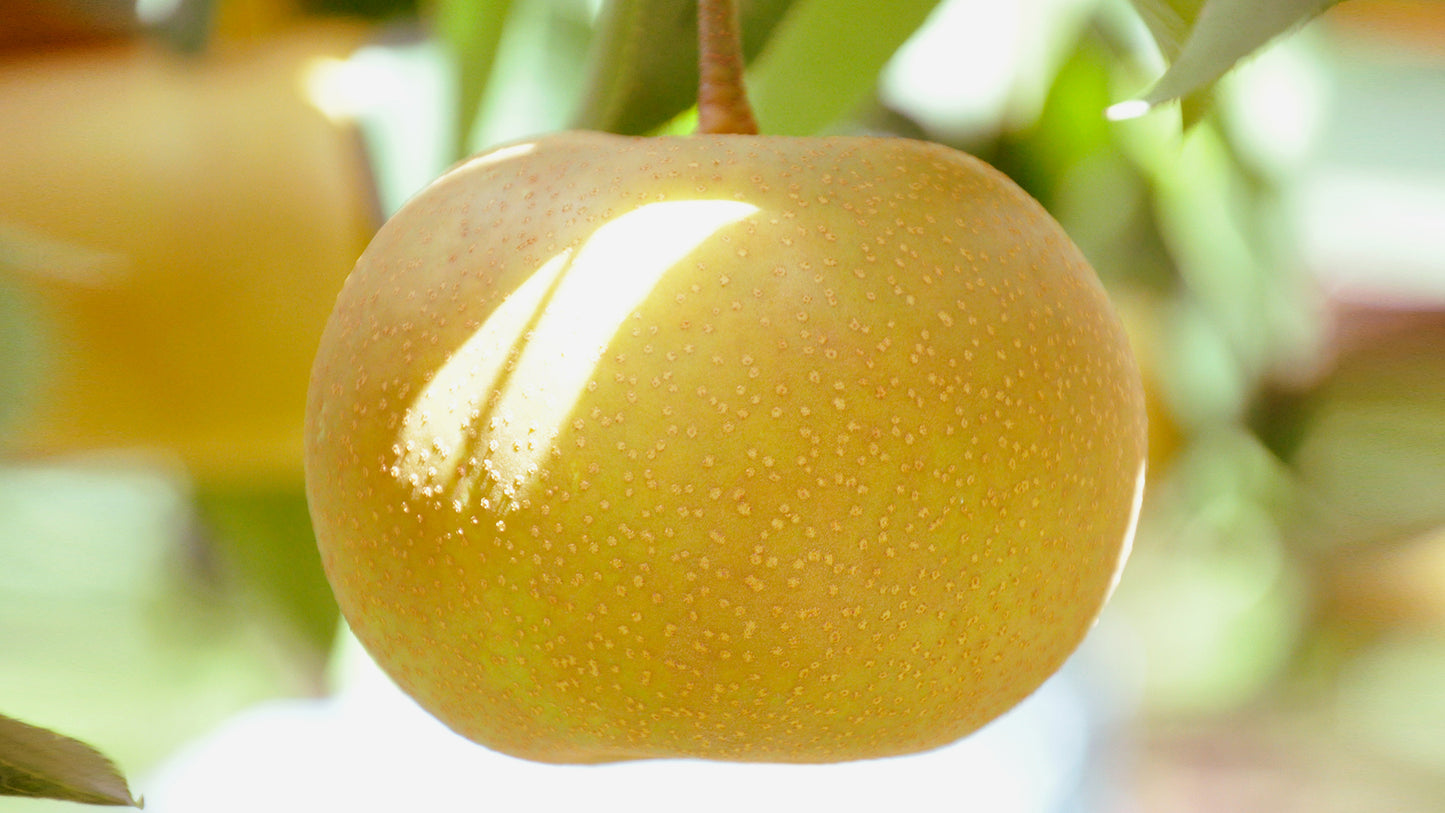
Would it surprise you to know that one of the most popular fruit gifts in fall season in Japan is the Japanese pear? A seasonal delicacy enjoyed by the most dedicated fans every autumn, this fall season fruit is beloved by Japanese people and fruit connoisseurs all over the world.
But what makes these delightful treats so special? How are they different from the pears in your local supermarket? Keep reading to find out everything you need to know about Japanese Pears.
Differences Between Japanese Pears and European Pears
The two main varieties you’re likely familiar with are the European Pear and the Japanese Pear, also called Asian Pears or “Nashi”. These cousins are distinctly different in appearance, taste and texture.
The European varieties you’re probably used to having in the states tend to have a longer neck with a bell shape, whereas the Japanese Pears have a round shape reminiscent of apples. The texture is quite different too. The European Pears have a soft and buttery texture. In contrast, Japanese Pears have a crispy and slightly grainy texture that turns into sweet juice that overflows from your first bite. Japanese Pears have a gentle sweetness with a hint of acidity which makes them a super refreshing dessert.

Another major difference between these two species of pears is the best time to eat them. You may have heard that the best time to eat a pear is when it is slightly soft, but this is not true for Japanese Pears. Instead, they’re best enjoyed while crisp. Just make sure you wait a few days after harvest as it continues to ripen. This way, you’ll get to enjoy them in their peak sweetness.
What are the Different Varieties of Japanese Pears?
There are many different breeds of Japanese Pears and one of the most exciting parts of partaking in a Japanese Pear is discovering the different nuances in taste and appearance. Let’s take a look at some of the most popular pear varieties in Japan.
Kosui: Juice of Good Fortune
Kosui is one of the more well-known pear varieties in Japan. It has a well-balanced flavor of sweet and tart, loved by many Japanese natives. You’ll often see them in supermarkets and fruit specialty shops around July to September. with a yellowish-green color at the beginning of its season, which turns into a brownish color towards the middle of its season.
Akizuki: Autumn Moon
Another pear variety popular amongst fruit connoisseurs is Akizuki. Compared to Kosui which is typically about 8-10 oz. a pear, Akizuki tends to be larger weighing over a pound a pear. Akizuki has very little acidity. Instead, it’s all about the rich sweetness (high sugar content). Harvesting begins in late September.

Shinkou: Emergent
Shinkou is a variety that was born in Niigata Prefecture, a region with a long reputation for cultivating Japanese Pears. This variety is characterized by an overflowing sweet juice mixed with gentle acidity. Harvesting starts in mid-October.
Atago Nashi: The “Jumbo Pear”
Farmer Kazuya Umehara has perfected the art of cultivating Atago Nashi, a variety of pear grown in the fertile lands of Aichi Prefecture. Acclaimed as the “Jumbo Pear”, these Nashi pears are famous throughout Japan for being a spectacular holiday gift due to their size and sweetness. Each Atago Nashi weighs over 2lbs on average. These Nashi fruits are shipped with a delicate styrofoam wrapping that ensures their arrival in a more pristine condition.

In 2011, Kazuya Umemura achieved a miraculous record of 6.5lbs, which was recorded as the World's Heaviest Pear in the Guinness Book of World Records. In 2013, he achieved his personal best of 7.5lbs, establishing his name as the master of Atago Nashi.
Each Atago Nashi tree is treated to a specialized cultivation process involving extra watering, adjusted fertilizer application, and a reduced load of fruit to ensure the maximum amount of nutrients can reach the remaining specimens. Selecting the most genetically optimal pear tree is the key to successful Atago Nashi cultivation. These trees with outstanding DNA get shared with neighboring farmers, creating a collaborative pear farming community.
With such a long, entangled history with human civilization, it’s no surprise that some people have dedicated their lives to discovering the optimal cultivation method for this deeply adored fruit. Ikigai Fruits is proud to partner with farmers who have proven their “ikigai” lies in sharing these prizes of peak collaboration between human ingenuity and nature’s design with the world.
Japanese Pears are a staple in Japanese fruit gift-giving culture, and it’s not hard to see why. Every year, the finest specimens are shared amongst a select few loved ones and honored guests who get to partake in the limited harvest. Missing the window to enjoy these rare treats means having to wait an entire year until the season comes around again. Let Ikigai Fruits help you snag your Japanese Pears to enjoy before they’re gone for this season.
